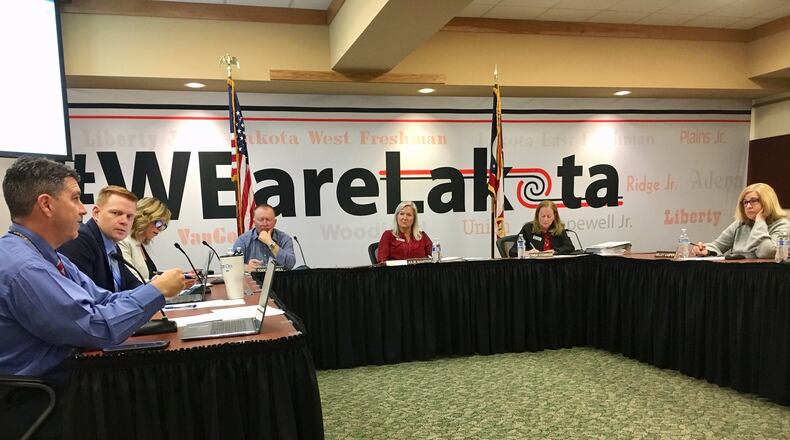School board members said Monday they are supportive of one of two plans to restore some or all busing to grades 9-12, which was eliminated as part of budgets cuts in 2011.
Members mostly discussed two of the five options offered by school district officials during the board’s work session and agreed to cast a final vote picking a busing restoration plan at its next meeting on Nov. 18.
One proposal would restore busing only to ninth graders attending the district’s two freshman schools – Lakota East in Liberty Twp. and Lakota West Freshman School in West Chester Twp. Busing under that plan would cost Lakota $2.7 million annually.
The second option would a restoration of grades 9-12 busing, which would cost $4.5 million per year.
Lakota’s annual operating budget is $177 million.
“There are positives and negatives to each one,” Lakota Superintendent Matt Miller told the board.
Any changes to Lakota’s busing would not come into effect until the start of the 2020-2021 school year, said officials, because it takes more than eight months to order additional buses, hire more drivers and plan out the logistics of adding and changing dozens additional routes.
Nearly nine in 10 (86.2 percent) of Lakota freshman school parents surveyed said they “anticipate (their) child using these services,” according to a recent survey conducted by Lakota district officials that garnered 4,803 responses.
Even more (87.2 percent) parents of sophomores said they expect their children would ride restored school bus services, while the percentage of anticipated usage dropped to 57.6 percent of high school junior parents.
Among senior parents, the percentage to 33.9 percent, according to the district’s survey.
Board member Lynda O’Connor requested more information on the other three options, specifically concerning cost savings that may result from altering school start times to extend busing services.
But Lakota Board member Brad Lovell said, “I think the freshman transportation only option is the most desirable.”
Lovell said the school parent survey shows interest in freshman and sophomore busing, “but in 11th and 12th (grades) it drops off significantly. Plus we also know from past history that the buses are pretty empty when we look at (grades) 10-12.”
“The desire is there (for 10-12 busing) but it doesn’t always become a reality,” he said.
Board President Julie Shaffer expressed interest in charging a “nominal fee” for some high school grade bus usage. But she added such an option would require state lawmakers to change school law and “we’ve been told there isn’t the political will in Columbus.”
Lakota school parent Emily Jackson said she wants the busing option available next school year for her daughter, who will start ninth grade.
It’s been so many years since busing was available to grades 9-12, said Jackson, that “you don’t hear about too much anymore at PTO (Parent Teacher Organization) meetings.”
“But it’s hard to car pool because it makes for an extra challenge” in transporting students, she said.
The decision by Lakota officials to cut high school busing in 2011 came amid a series of school operating levy defeats at the ballot and was part of more than $20 million in program and personnel cuts prior to passage of a new operating tax in 2013.
In Ohio, the state’s 613 public school systems are only required to provide busing to students in kindergarten through eighth grade.
But if a district decides to exercise its local option of providing some high school busing, the state mandates the school system must also provide busing to private school students residing in the district to any private school within a 30-minute drive of that family’s home.
Lakota enrolls 16,500 students and is Ohio’s eighth largest school system as well as Southwest Ohio’s largest suburban district.
About the Author
